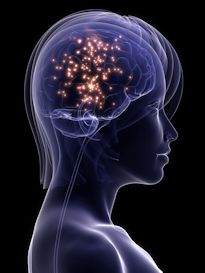
|
|
The Unconscious Mind
Click here to email this
page to a friend. |
||
A
Simplified Explanation
The
conscious mind is the playback unit for many of these
recordings. Example: A young child touches the handle of a
hot pot on a stove. The hot handle causes pain. The child
jerks his hand away and feels the pain. This is seen and
felt so it is recorded in the unconscious mind. Each time
the child touches a hot pot on the stove, he ex�periences
the same reaction. After
several repetitions of the above, a behavior pattern
(conditioned response) is formed. From that time on, when
the child sees the pot on the stove, information from the
unconscious mind, the recollection of pain is projected back
into the conscious mind. The child does not touch the pot
again. Thus, the unconscious mind does not reason. It merely
accepts information, stores that information, and releases
it for later usage. The input to the unconscious mind
controls the output from the unconscious mind. Only
information which has been put into the unconscious mind can
be retrieved from it. The
unconscious mind is the seat of your emotions. If you feed
in a sad thought, a sad emotion will be projected into the
consciousness. If you feed in a happy thought, a happy emo�tion
such as joy will be projected into the consciousness. If you
worry, consciously you will be feeding this negative into
your unconscious and tension will be projected into the
muscles of your body. From
these examples, it is quite easy to intellec�tualize that
you have control over the way you feel because your feelings
are based on your thoughts. The attitudes that you establish
toward particular situations in your life will give you more
precise control over your feelings and reactions to these
situations. Example:
Imagine that you have an old junker of a car, which you have
run into a tree. No one is hurt. You can afford a new car
easily. Your attitude is likely to be, "Who cares. That
car was ready for the junk heap anyway." So you would
experience no tension or upset from this accident. However, if you have a new car and have a $1,000.00 deductible collision clause in your insurance policy, your at�titude would probably be, "This is horrible! This is awful! I can't stand it!" This attitude is fed into the unconscious mind, resulting in tension and depression being projected into your body and consciousness. � 1982 By Alan B. Densky, CH. This document may NOT be re-printed. All Rights Reserved.
|
|||
 The
unconscious mind can be likened to a video and audio
recorder. The conscious mind does our reasoning, thinking
and communicating. The conscious mind points the video and
audio recorder at that which we wish to learn and remember.
Basically, everything we have seen, touched, smelled, heard
or tasted, is recorded in the unconscious mind.
The
unconscious mind can be likened to a video and audio
recorder. The conscious mind does our reasoning, thinking
and communicating. The conscious mind points the video and
audio recorder at that which we wish to learn and remember.
Basically, everything we have seen, touched, smelled, heard
or tasted, is recorded in the unconscious mind. 